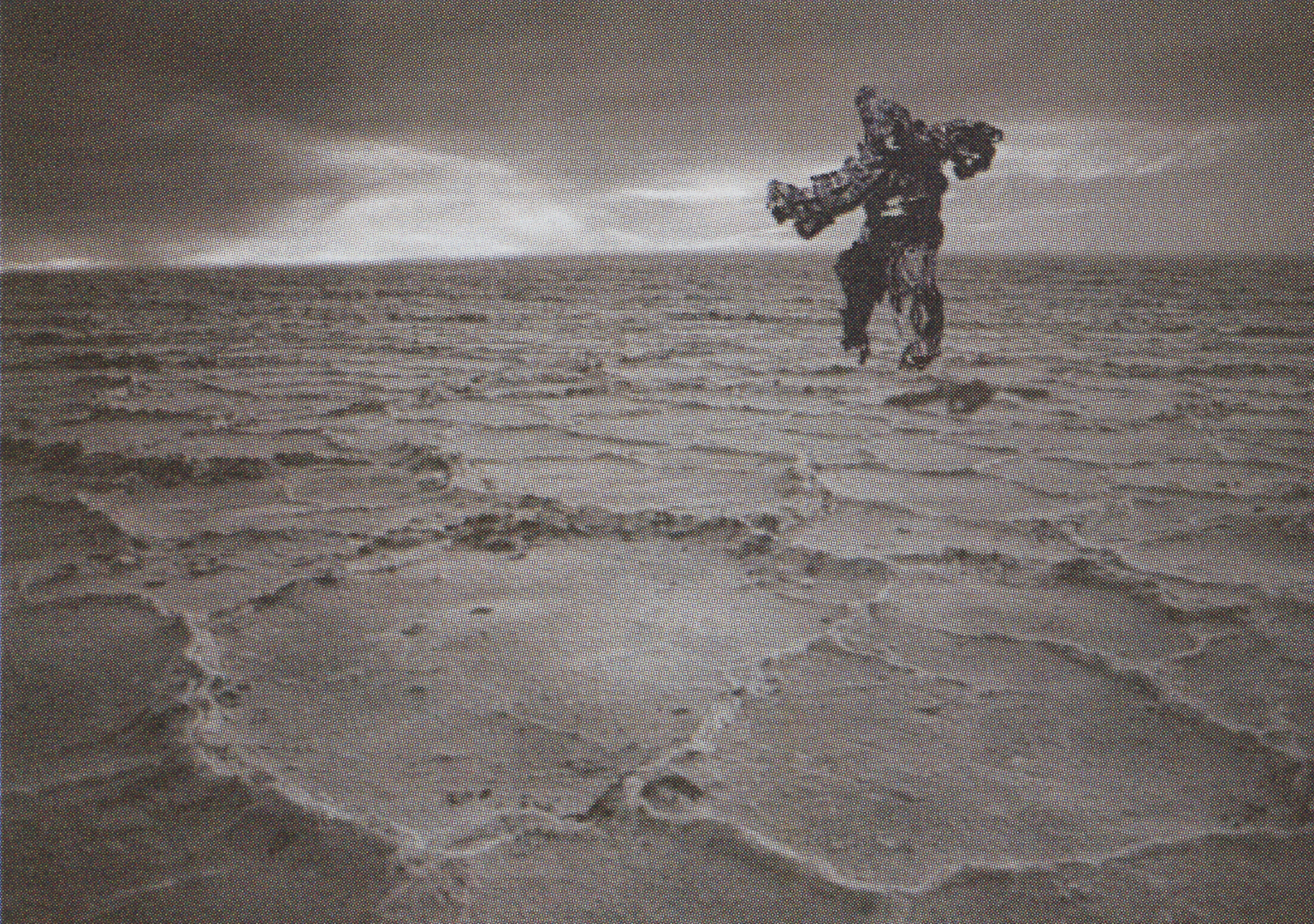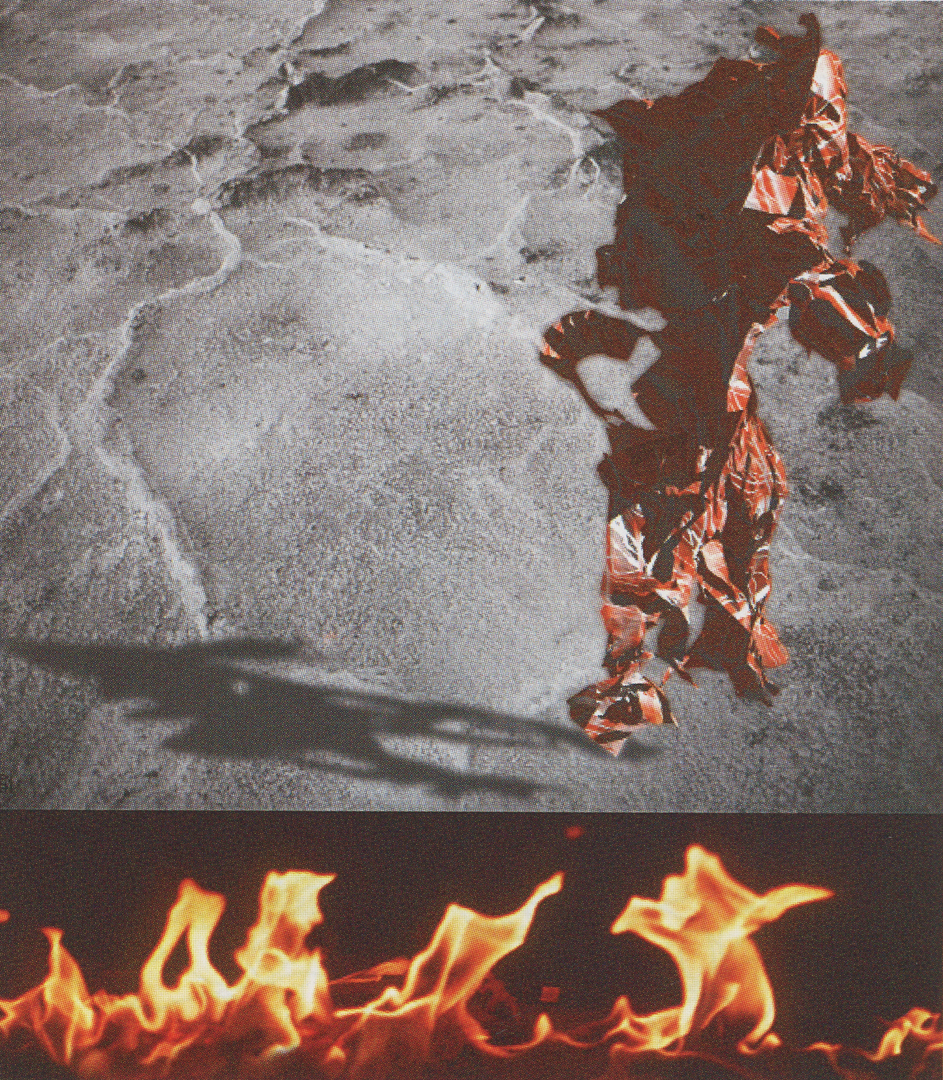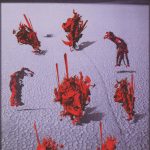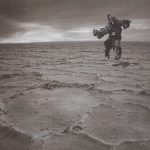Jen Zen (Jen Grey): Badwater, Hotlicks
Artist(s):
Title:
- Badwater, Hotlicks
Exhibition:
- SIGGRAPH 2002: Art Gallery
-
More artworks from SIGGRAPH 2002:


Creation Year:
- 2002
Medium:
- digital prints on canvas (ColorSpan Display Maker XII)
Category:
Artist Statement:
“When Manfred E. Clynes and Nathan S. Line created the term cyborg in 1960, short for cybernetic organism, the concept was a spunky way to think about conquering new frontiers in alien environments.” – Tyler Stallings
“The Cyborg is resolutely committed to partiality, irony, intimacy, and perversity. When boundaries are being transgressed and when fusions create new entities, then it is hard to discern between the natural and artificial, especially in today’s technology mediated society.” – Donna Harraway
My cyborgs appear so quietly you could hear a hawk’s pinion feathers rasp against an updraft of wavy hot air before they came upon you. Floating across the salt flats, they are husks-sharp, dry, weird, and eerie. They resonate as crackled memories of survivors who fled from fears of final conflict, seeking peace in a parched earth. Squeezed out of my own contradictions, they can stay alive in Death Valley, an ancient and elementally awesome place, a sanctuary of great majesty, refuge and inspiration.
I have innate joy in creating things that have never existed, and a horror that every “thing” manufactured masks displacement of vital life forces that become increasingly distanced from being. The sense of power and misery in this vulnerability is astonishing. On a bad day, I worry that my interactive work with computers will contribute in any way to the triumph of the undead and the unborn. On a good day, I look forward to hearing a rock talk back.
Someday, I would like to exhibit my cybertouch shells as they were originally intended to exist. They are life-sized, 30, virtual figures of light, and, at the same time, frozen gestures, literal songs, and 20 fictions. Until then…which could take years…I can tease you with print composites. They can be deconstructed as artifacts of unprecedented science, non-sequitors that look like really cool sci-fi movie stills.
Process Information:
“Human-Computer Interaction in a Semi-Immersive Environment”
Steven Schkölne invited “Jen Zen” to work with his proprietary software at the Caltech Multi-Res Modeling Lab. Featured in Emerging Technologies at SIGGRAPH 99, Surface Drawing is unprecedented, fostering free conceptual thinking in translating motion into form. Steven is shown using a CyberGlove in the interactive, semi-immersive, 3D environment of The Responsive Workbench. Stereoscopic CrystalEyes glasses provide an illusion of depth that makes freehand drawing strokes appear to float in space. [Schkölne S., Pruett M. & Schroder P. Surface Drawing: Creating Organic 30 Shapes with the Hand and Tangible Tools. Proceedings of CHI 2001.]
“Jen Zen” invited Sheriann Ki Sun Burnham to collaborate in pushing Surface Drawing in a direction for which it was not intended. Next to the Responsive Workbench, the artists built a temporary platform for drawing live models. Wearing CrystalEyes, Sheri traced Judith Moncreiff (a respected digital-art pioneer) from head to toe with the CyberGlove, politely avoiding tickle spots. Coordinating head-hand distance and movement minimized apparent multiple perspective distortion. Eliminating movement of the stereoscopic glasses yielded greater “realism”, so “Jen Zen” chose not to wear the glasses while drawing Tyler Stallings. Instead, the CrystalEyes were taped to the ceiling above the model, which established a fixed vanishing point for motion capture. In the spirit of traditional blind contour drawing, the intention was not to look at the virtual form as it was created, but to focus on the interactive, kinesthetic aspect of cybertouch drawing. The curious 3D form created was alien, anthropomorphic but not human.
Different views of the Tyler figure are central characters in two digital prints Badwater and Hotlicks. The experimental life drawing was exported from the Responsive Workbench as an .iv file, then converted to edit as a 3D VRML file in Bryce 4.0. The figure was texture-mapped and keyed to a different light source before editing as a .psd file in Photoshop 5.5. The flame panel in Hotlicks is 100 percent pure digital painting, in no way photographic. Landscape backdrops, however, were originally shot in Death Valley with a 35mm SLR Canon F-1 camera and 28mm lens. Highly realistic effects were achieved using Photoshop tools to edit the work, as only a painter trained in old-school traditions can do. Finishing layers in both works were filtered in Painter 6.0. Recreating human scale was important, so large-format digital prints were output on a ColorSpan Display Maker XII at Jack Duganne’s Atelier, using Epson 1200/ MIS archival ink.








